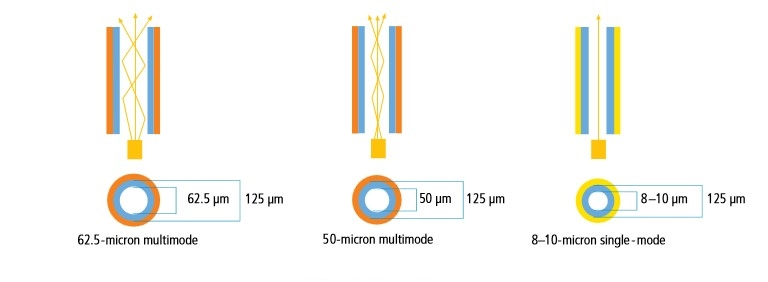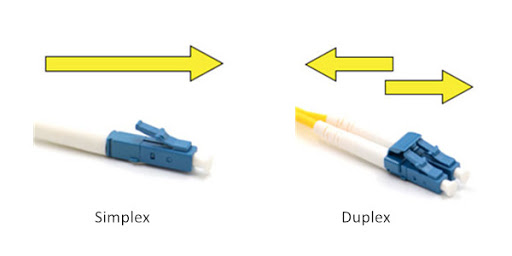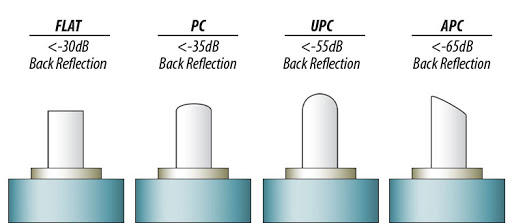Fiber Optic Patch Cords, often called fiber patch cable, fiber jumper, or fiber patch lead is a length of fiber cable that terminated with fiber optic connectors (LC, SC, MTRJ, ST and etc.) at each end. The connectors allow the fiber optic patch cord to be rapidly connected to an optical switch or other telecommunications/computer device. Fiber jumper is a key player for indoor use, like in server rooms or in data centers. Featuring excellent reliability, superior adaptability, and improved security, the fiber patch cord has ranked the best choice for applications where conventional copper cables fail to reach.
Common Types of Fiber Patch Cord
Based on different specifications and standards, the common Fiber Optic Patch Cords can be categorified from the perspective of fiber cable mode, transmission mode, jacket type, connector type, and polishing type.
Fiber Cable Mode
The mode of fiber patch cables indicates how light beams travel within the fiber. There are two fiber cable modes: single-mode and multimode.

Single-mode fiber patch lead only allows one mode of light to pass along its length with a very thin diameter of 8-10 microns, thus it can carry signals at much higher speeds with lower attenuation. Single-mode fiber has two varieties: OS1 and OS2, which are different in construction and application. In Comparison Between OS1 and OS2 SMF Cables, the differences between OS1 and OS2 are illustrated. In general, OS1 and OS2 are both applicable for long-haul transmission but OS2 is more suitable for long-haul transmission by offering better performance with fewer losses.
The core of the multimode fiber patch cord is bigger, typically 50 or 62.5 microns, which enables multiple light modes to be transmitted. It comes in five varieties supporting different transmission rates or distances: 62.5-micron OM1, 50-micron OM2, 50-micron OM3, 50-micron OM4, and 50-micron OM5, which can be differentiated by standard jacket colors. Since multiple light paths travel down the cable, the distance which multimode fiber jumpers can reach is usually short. For short-distance transmission within a building or campus, multimode fiber patch cords are the best-suited type. You can get more information about multimode patch cables in Multimode Fiber Types: OM1 vs OM2 vs OM3 vs OM4 vs OM5.
Number of Fiber Strands: Simplex or Duplex
According to the number of fiber strands, there are simplex and duplex fiber patch cord. As shown in Figure 2, simplex fiber patch cord contains one single strand of fiber with one simplex connector on each end. It can be linked with a pair of BiDi transceiver modules featuring with one port. Whereas duplex fiber patch cord consists of two strands of glass or plastic with one duplex connector (or considered as two simplex connectors). It is often linked with common transceivers or dual fiber BiDi transceivers.

Polishing Type: PC, UPC or APC
Fiber optic connectors are designed and polished to different shapes to minimize back reflection, which is particularly important in single mode applications. According to this connector polish types, there are PC, UPC, and APC fiber patch cords. This post PC vs UPC vs APC Connector: Selecting the Right Fiber Connector Type presents the difference of PC, UPC, and APC. Nowadays PC polish type has been replaced by UPC type. Whether you choose UPC or APC depends on your actual application. Since APC provides less insertion loss than UPC, the APC fiber patch cables are more applicable for high bandwidth applications and long-distance links, such as FTTx, passive optical network (PON) and wavelength division multiplex (WDM). Whereas UPC Fiber Optic Patch Cords apply to optical systems that are less sensitive to insertion loss such as digital TV and telephony.

Connector Type: LC, SC, ST or Others
There are many connector types used in fiber patch cables such as LC, SC, ST, MTP or MPO listed in this article How Many Fiber Connector Types Do You Know? Aside from these connectors, there is a latest connector design called MDC connector, which enables the highest achievable connector density by delivering a 3X advantage over a standard LC connector. The different connector types are to plug into different interfaces, so you’d better affirm the interface type of the devices you are using the first time.
If divided by the criteria whether the connector on each side is the same, they can be divided into same-connector type fiber patch cord and hybrid fiber patch cord. Fiber Optic Patch Cords that have the same type of connector on both ends includes LC to LC fiber patch cord, SC to SC fiber patch cord and etc. While hybrid fiber patch cord has different connectors on each end, like fiber patch cord LC to SC. If the port type of devices on both sides are the same, you can choose the same-connector type fiber patch cord, or you need choose the hybrid one.
Jacket Type: PVC or LSZH
PVC and LSZH are used to describe the common jacket material of fiber patch cord. Fiber patch cables covered with PVC jacket are flexible at normal installation temperatures. Compared with PVC patch cords, LSZH patch cords are more rigid and less flexible but they contain the flame retardant compound that doesn’t emit toxic fumes if it burns. PVC fiber optic patch cord is usually used for indoor applications such as horizontal runs from the wiring center. While LSZH cable is used in unventilated areas exposed to public, such as subways and tunnels and also used for rooms that are not easy to get out quickly.
Gkoptic Supplies a varity of fiber optic patchcord, please contact us at sales@gkoptic.com.


